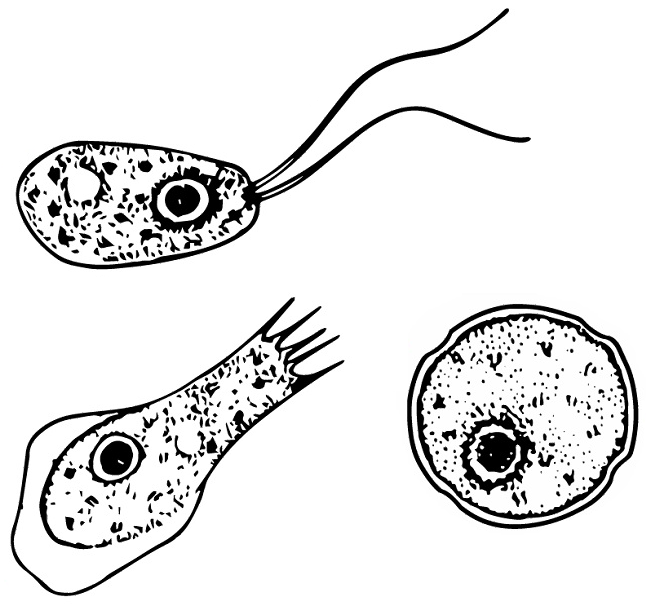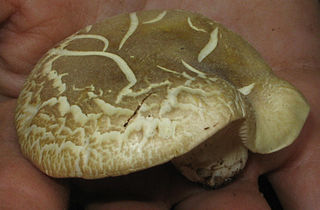
Naegleria is a free living amoebae protist genus consisting of 47 described species often found in warm aquatic environments as well as soil habitats worldwide. It has three life cycle forms: the amoeboid stage, the cyst stage, and the flagellated stage, and has been routinely studied for its ease in change from amoeboid to flagellated stages. The Naegleria genera became famous when Naegleria fowleri, a human pathogenic strain and the causative agent of primary amoebic meningoencephalitis (PAM), was discovered in 1965. Most species in the genus, however, are non pathogenic.

Amblyseius is a large genus of predatory mites belonging to the family Phytoseiidae. Many members of this genus feed on other mites such as red spider mites, and also on thrips. Several species are popular as biological control agents to control these pests.

Naegleria gruberi is a species of Naegleria. It is famous for its ability to change from an amoeba, which lacks a cytoplasmic microtubule cytoskeleton, to a flagellate, which has an elaborate microtubule cytoskeleton, including flagella. This "transformation" includes de novo synthesis of basal bodies.

Cantharocybe is a genus of mushroom-forming fungi in the family Hygrophoraceae. The genus was described by American mycologists Howard E. Bigelow and Alexander H. Smith in 1973. Cantharocybe contains three species: the type C. gruberi, and C. brunneovelutina from Belize, reported as new to science in 2011, and C. virosa, transferred from "Megacollybia", and found in Bangladesh and India.
Amblyseius ampullosus is a species of mite in the family Phytoseiidae.
Amblyseius andersoni is a species of mite in the family Phytoseiidae. It is found in Europe.
Amblyseius asperocervix is a species of mite in the family Phytoseiidae.
Amblyseius bellatulus Tseng is a species of mite in the Phytoseiidae family that is native to Taiwan. It was described by Tseng Yi-Hsiung in 1983. Following his retirement, Tseng's collection of more than 20 holotypes of Taiwanese phytoseiid fauna were lost. A. Bellatulus re-described in 2017 by a team from National Taiwan University led by Liao Jhih-Rong, who collected new specimens of phytoseiid mites from the original locale used by Tseng as well as other areas throughout Taiwan.
Amblyseius boina is a species of mite in the family Phytoseiidae.
Amblyseius cessator is a species of mite in the family Phytoseiidae.
Amblyseius fletcheri is a species of mite in the family Phytoseiidae.
Amblyseius siddiqui is a species of mite in the family Phytoseiidae.
Amblyseius supercaudatus is a species of mite in the family Phytoseiidae.

Amblyseius tamatavensis is a species of mite in the family Phytoseiidae.
Turbonilla gruberi is a species of sea snail, a marine gastropod mollusk in the family Pyramidellidae, the pyrams and their allies.
Woytkowskia gruberi is a species of beetle in the family Cerambycidae. It was described by Martins and Galileo in 1992. It is known from Costa Rica.
Typhlodromips swirskii, the Swirski mite, is a species of predatory mite in the family Phytoseiidae. It is used in biological pest control of western flower thrips in greenhouse or indoor grown crops.

Elonus is a genus of ant-like leaf beetles in the family Aderidae. There are about seven described species in Elonus in Northamerica.





